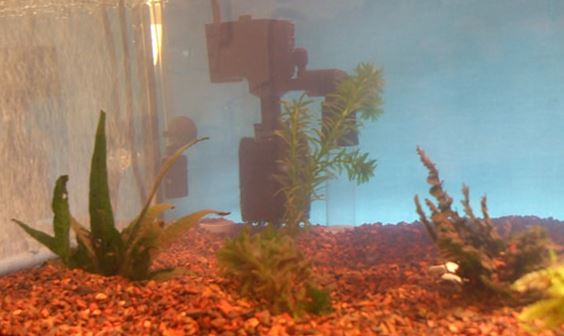Why is my turtle tank water red?
Turtles need a freshwater source to keep them healthy and happy. That’s why many people choose to invest in a turtle tank with a built-in filter, or at least an external one.
But what happens when the water turns red? Or green? Or yellow?
Read this blog post to find out more!
Related Posts:
- Top 5 Turtle Substrate for Your Pet Tank
- How to Keep Turtle Aquarium From Smelling?
- How Much Does a Turtle Tank Filter Cost?
- Why Does My Turtle Tank Have White Bubbles?
Why Is My Turtle Tank Water Red?
So, why is your turtle tank water red?
Water with minerals that have iron can cause discoloration. This is because the iron particles that are in the water start to rust.
When this happens, your aquarium may turn red.
Why Is My Turtle Tank Water Green?
Why is your turtle tank water green?
Algae is a kind of plant that grows in the water. It can make the water green, but it doesn’t hurt turtles.
But if you have too much algae, the conditions in your tank may be bad for turtles.
Why Is My Turtle Tank Water Yellow?
Why is your turtle tank water yellow?
When your water is yellow, it could be because of a bloom of algae. Algae are a type of microorganism that can make the water turn yellow. They usually start as green but they turn yellow when they sit in the water too long.
Your tank might also be cloudy because there are bacteria living in it and for some other reason, so you should check both things to know what to do next.
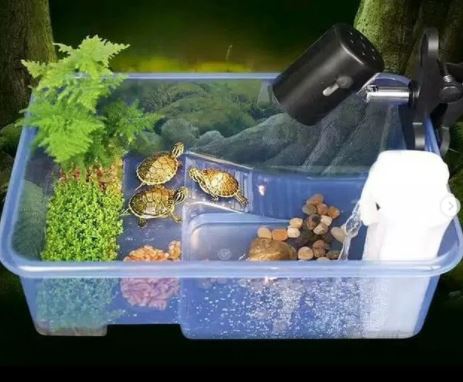
How to Remove Algae From Fish and Turtle Tanks?
Algae growth in fish and turtle tanks can be a nuisance and even dangerous to the health of your fish.
Algae will use nitrates and other nutrients in the water as food, hence contributing to poor water quality.
It can also restrict access to oxygenated water to gills leading to the suffocation of fish.
Thereby, it is important that algae are removed from fish tanks as quickly as possible before they notice an invasion.
Here, we will give some tips on how you can remove algae from your fish tank or pond.
How to Use Natural Methods for Removing Algae?
One effective way of removing algal growth from aquariums is by using natural methods that have no harmful effects on both and fishes. The first method consists in using snails whose diet consists of algae.
They will eat the algal growth and keep it at bay. You can also use another type of snail that feeds on hair algae.
The second method is to harvest the algae manually. Take an oxygenated water container, dip your hands in it, and start removing the algae from the fish’s tank or pond carefully, avoiding damaging any other plants or animals in there.
Make sure you remove all forms of algae by dipping your hand a few times so as not to allow spores to grow once again.
How to Use Chemical Methods for Removing Algae?
The best way to get rid of algae is by using chemicals that have no effect on both flora and fauna (i.e., no harm to the plants and animals in the tank).
One of the main causes of their growth is excess nitrates in the water.
Excess nitrates are produced by fish wastes. Hence, if you reduce these wastes by performing frequent partial water changes, you will get rid of algae, too.
The second chemical method to use consists of using formalin, which kills all types of algae. It’s harmful to fish, so make sure that either they are transferred to another container or oxygenated freshwater is added to dilute the formalin before putting them back into their tank.
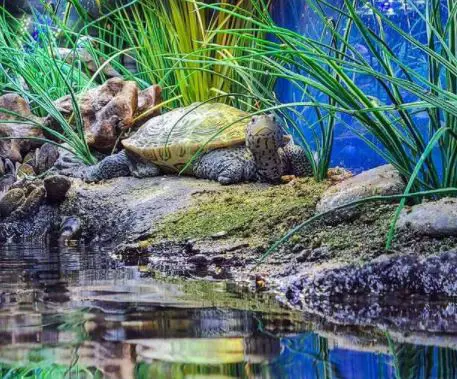
How to Use Chemical Methods With Natural Methods?
Combining both natural and chemical methods for removing algae from your fish tank or pond is also an effective way, especially when you lack time for doing frequent partial water changes.
How to Use UV Sterilizers for Removing Algae?
UV sterilizers are effective in killing algae because of their effect on photosynthesis by turning algal cells into carbon dioxide, which doesn’t affect fishes, plants, and bacteria. It is thus an ideal way for ridding your tank of algae without harming the tank’s inhabitants.
These are some common methods that can be applied when trying to remove algae from fish tanks or ponds.
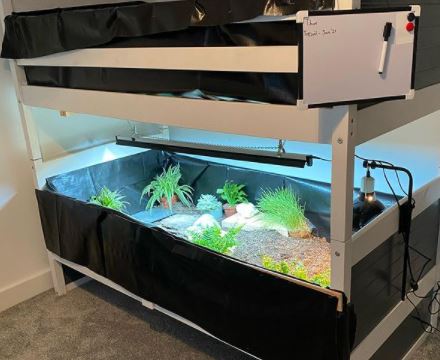
Is Distilled or Tap Water Better for Turtles?
A turtle’s habitat is its home. It has water that provides buoyancy and allows the turtle to maneuver.
Another role that water plays in the turtle’s life is as a filter. The water passing through your turtle’s system will help to remove waste products, thus allowing your pet more freedom from illness and disease.
If you are changing the turtle’s water frequently, you can make it easier on yourself by ensuring that what goes into the tank (tap or distilled) is of good quality and safe for your turtle.
Tap Water
We have all been told at one time or another by our mothers not to drink tap water because it contains bacteria and other pollutants.
Tap water can be treated with chlorine, which is effective at killing most bacteria. But is not safe for human consumption nor is it good for your turtle.
Another chemical sometimes added to tap water is fluoride. This compound helps prevent tooth decay.
Unfortunately, many turtles are killed each year by ingesting too much fluoride during the time that they are trying to break their shell out of their soft epidermal layer (ecdysis).
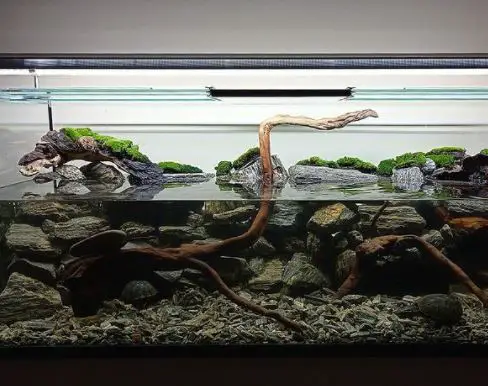
Distilled Water
Distilled water lacks dissolved minerals and, as a result, has been used in the medical field as an intravenous “drip” fluid when a patient needs hydration without all those nasty byproducts from medications being introduced into the body through blood transfusions.
This same property makes distilled water very attractive as a drinking source because it doesn’t have any of the extra added chemicals present in tap water.
The problem with distilled water for turtles is that it lacks the minerals needed by your turtle to stay healthy.
How to Distill Water?
Water can be boiled and the steam captured then condensed into liquid forms, such as boiling a pot of water on your stove then catching the steam and letting it drip back into a clean container.
To distill water, you need an apparatus called an electric vacuum pump because this method requires boiling the water at a temperature lower than 212 degrees Fahrenheit (the boiling point of normal atmospheric pressure) to avoid losing some or all of the steam through evaporation before it condenses and drips from the bottom of your apparatus into your waiting container.
Tap vs. Distilled Water for Turtles
A study was done in the late 1970s where it was determined that water turtles were capable of drinking both distilled and tap water but preferred to drink distilled water.
If your turtle is not a picky eater, then you may find that distilled water will suffice as long as you are diligent about cleaning its habitat.
Keep in mind, though, that there are “mixed reports” on whether or not this practice is good for your turtle so if possible try to provide both sources of water for your pet turtle.
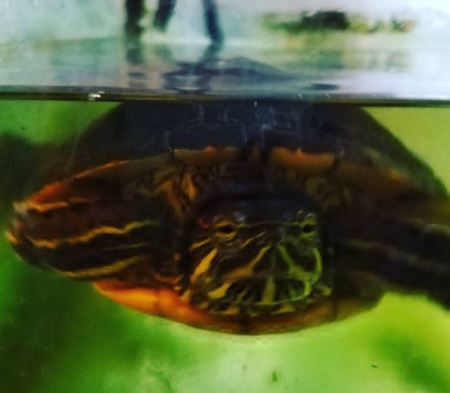
Is Tetra Water Clarifier Safe for Turtles?
Tetra brand Water Clarifier is usually safe for turtle tanks. However, it can be dangerous if used without an understanding of its proper use and effects on the aquatic environment.
I personally avoid using any chemicals that might affect water clarity or pH because my turtles’ health and growth are more important than anything else, even if that means I have to change their water several times a day to keep it clean.
And no, changing the water every day doesn’t bother me AT ALL! If you are not sure about the safety of Tetra Water Clarifier for turtles, please read further.
First, what does Tetra’s product description say?
The active ingredient in Tetra Aquarium Water Clarifier is Polyvinylpolypyrrolidone or PVPP for short. It is a polymer that forms microscopic, positively charged particles, which attract negatively charged particles suspended in the water.
This causes the suspended particles to clump together so they can be more easily removed by mechanical filtration or siphoning.
From Tetra’s description, PVPP sounds harmless enough. But according to Drs. Foster and Smith, it may cause adverse effects on some sensitive fish species such as convict cichlids and angelfish (my angel has been using Tetra brand Water Clarifier without any problem for months now).
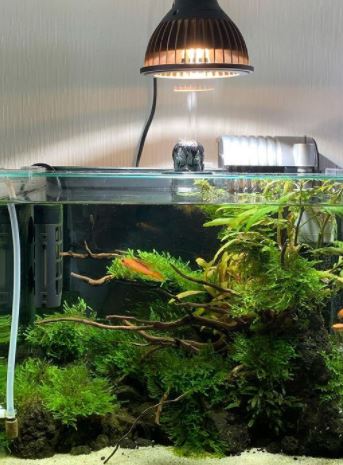
Also, if you are planning to use other types of medications along with Tetra’s product, make sure you read all precautions first because there might be interactions between different chemicals.
There is another, more serious problem associated with Tetra Water Clarifier (and other similar water clarifying products) that concerns filter bacteria.
When PVPP binds itself to particles in the water, it also binds itself with some of the nitrifying bacteria in your tank, which increases their “stickiness.”
The bound bacteria can no longer provide full biological filtration for your turtle tank and will have to be removed by regular cleaning.
You may not realize this until you start noticing ammonia or nitrite spikes after using Tetra’s product, so make sure you do regular water changes before anything drastic happens to your turtles’ health.
Having said all that, I have used Tetra brand Water Clarifier multiple times in my turtle tanks with great success. The product did exactly what it claimed.
I was able to maintain clear water for weeks without having to change the water very often, and my turtles are still alive and doing good after many months of use.
Please note that the “success” is limited to my own experience with Tetra Water Clarifier, which may or may not be applicable to your turtle tank. You have been warned!
Also, if you do decide to use Tetra’s product, please remember that frequent partial water changes are a must while using this chemical because of its effect on nitrifying bacteria.
You should replace 25% of your tank water every time you add Tetra Waterifier. That way, there will be less buildup of the clarifying agent and your bacteria colony will stay healthy.
Conclusion
Why is your turtle tank water red?
The color of the water in your turtle tank is most likely caused by a red algae bloom.
When an aquarium has too much light, nitrates are not being removed from the water, and this can cause what is called a “red tide,” which occurs when certain types of bacteria produce excessive amounts of pigment that give it its reddish hue.
Red tides are usually harmless to turtles but they can lead to other problems for humans if ingested or inhaled, so you should take care to keep children away from any tanks with high levels of nitrate contamination until it clears up on its own.
If you have concerns about how safe your pet may be due to these conditions, please consult your veterinarian as soon as possible.
Key points as to why your turtle tank water is red:
Red water in a turtle tank can be concerning, but it’s important to identify the underlying causes and take appropriate actions to address the issue. Here’s a guide to understanding and dealing with red water in your turtle tank, presented in bullet points for quick reference:
1. Algae Blooms:
- Red Algae: The most common cause of red water in turtle tanks is the growth of red or pinkish algae. These algae can give the water a reddish hue.
2. Sunlight Exposure:
- Promotes Algae Growth: If your turtle tank is exposed to direct sunlight, it can encourage algae to proliferate, leading to red water.
3. Inadequate Filtration:
- Poor Water Circulation: Inadequate filtration or insufficient water circulation can allow algae to thrive by providing stagnant water conditions.
4. Overfeeding and Organic Debris:
- Nutrient Source: Overfeeding your turtles or allowing uneaten food and waste to accumulate in the tank can contribute to nutrient-rich water that supports algae growth.
5. Water Quality Issues:
- Ammonia and Nitrate Buildup: Poor water quality, characterized by elevated ammonia and nitrate levels, can promote algae blooms and lead to red water.
6. Solutions for Red Water:
- Increase Filtration: Invest in a high-quality filter and ensure it’s appropriately sized for your tank to improve water circulation and remove debris.
- Reduce Sunlight Exposure: Position the tank away from direct sunlight or use curtains, blinds, or shades to limit exposure.
- Monitor Feeding: Feed your turtles appropriate amounts and remove uneaten food promptly to reduce excess nutrients in the water.
- Water Changes: Regular water changes, typically 25-50% every 2-4 weeks, help dilute nutrient concentrations and improve water quality.
- Water Testing: Use water test kits to monitor ammonia, nitrate, and other water parameters. Maintain appropriate levels through filtration and water changes.
- Algae Control: Consider introducing algae-eating aquatic animals, like certain fish or snails, to help control algae growth. Ensure compatibility with your turtles.
- Manual Cleaning: Periodically clean the tank’s walls and decorations to remove algae and organic debris.
- Chemical Treatments: Some algae control chemicals can be used, but they should be a last resort and used cautiously, following manufacturer instructions.
7. Preventive Measures:
- Consistent Maintenance: Regularly maintain your turtle tank by cleaning filters, removing waste, and monitoring water quality.
- Proper Feeding: Offer a balanced diet and avoid overfeeding your turtles to reduce excess nutrients in the water.
- Control Sunlight: Shield the tank from direct sunlight and consider using artificial lighting with timers to maintain a consistent day-night cycle.
8. Consult a Vet:
- Health Assessment: If the red water issue persists despite your efforts, consult a reptile veterinarian to ensure your turtles are healthy and not contributing to the problem.
9. Patience and Persistence:
- Reduction Takes Time: Addressing red water may take time, as it involves controlling algae growth and maintaining water quality.
Addressing red water in your turtle tank requires vigilance, regular maintenance, and an understanding of the causes. By implementing the solutions outlined above and maintaining a clean, well-filtered environment, you can provide your turtles with a healthy and aesthetically pleasing habitat.
Further Reading
- 7 Best Plants for Turtle Tank
- 5 Best Turtle Basking Platforms
- How to Make UV Light for Turtles?
- Do Turtles Need Light 24 Hours a Day?
- Can Turtles Live in a Fish Tank Filled With Water?

